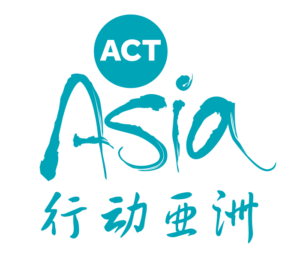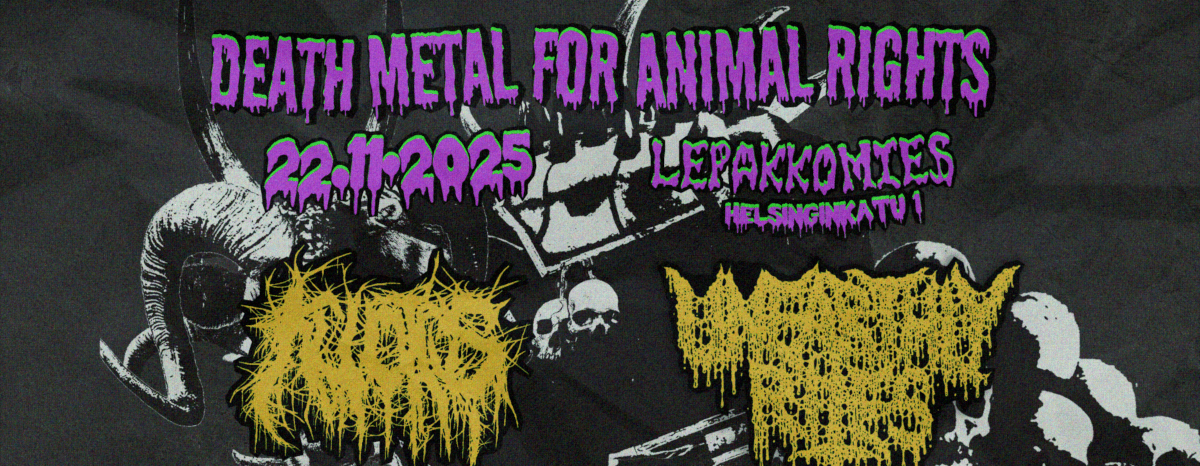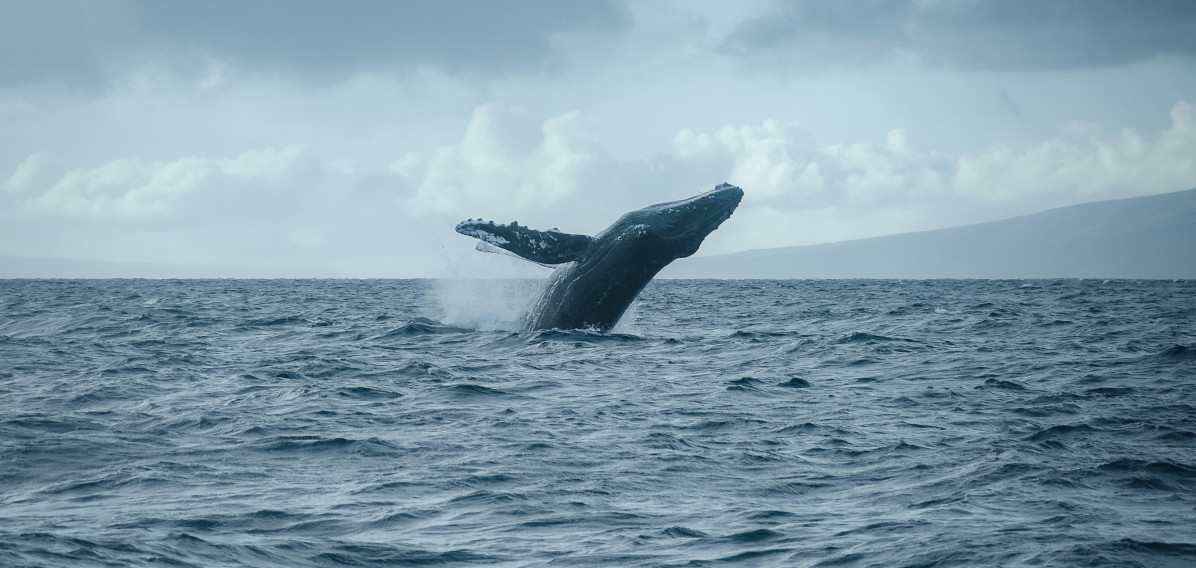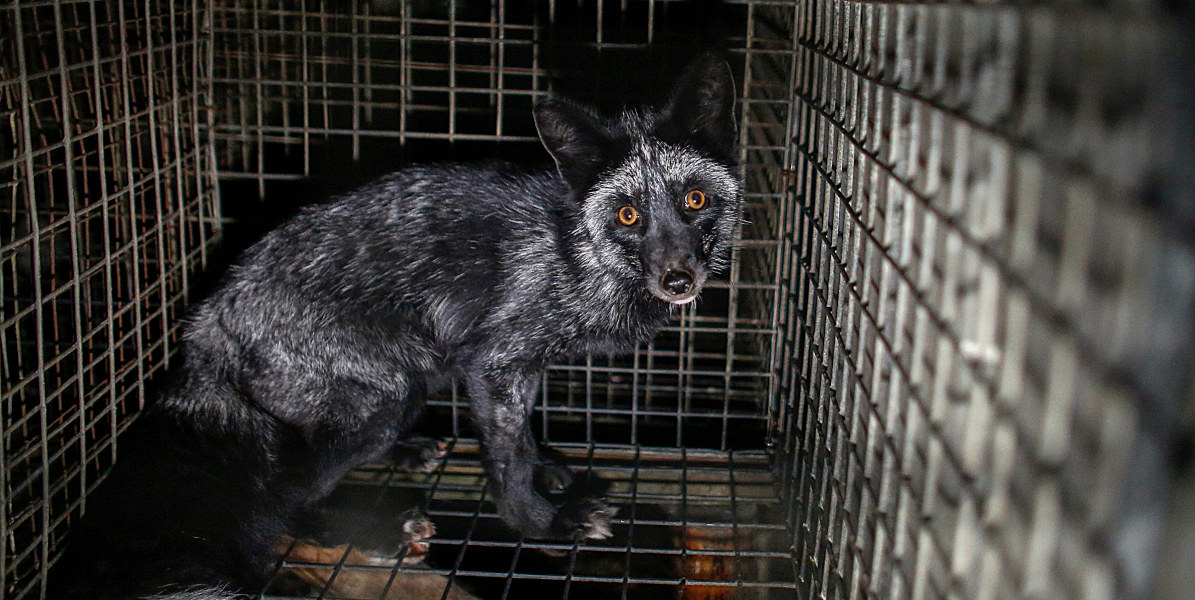Animal welfare and Animal rights concern’s numerous of people around the globe that care for the ones that can not speak for themselves. We live in a world where, unfortunately, animals are seen as commodities and worthless of humane treatment in the eyes of many people. Luckily there are people that want to fight this injustice towards animals and around the world there are growing number of different animal welfare and animal right groups that have the same vision to make this world a better place for animals.
The organisation that was chosen from China to this story is ACTAsia. ACTAsia was founded in 2006 by CEO Pei Su together with and Asian veterinarian who saw the need to promote compassion for animals, people and the environment in Asia in order to address the root cause of many societal issues. The organisation’s goal is to educate children, consumers and professionals in Asian societies to help build a kinder and more sustainable world.
 For animals, they actively campaign for a ban on fur in the fashion industry and also to put an end to factory farming. They also have an extensive Vets for Change Veterinary Training programme, where vets are educated across Asia in best practice. For the Children’s education programme, Caring for Life, helps primary school children develop compassion, awareness and a sense of active responsibility for animals.
For animals, they actively campaign for a ban on fur in the fashion industry and also to put an end to factory farming. They also have an extensive Vets for Change Veterinary Training programme, where vets are educated across Asia in best practice. For the Children’s education programme, Caring for Life, helps primary school children develop compassion, awareness and a sense of active responsibility for animals.
Introduce yourself and what made you become interested about animal rights?
 I am Pei Su, the Co-Founder and CEO of ACTAsia. As a child I remember how it was uncommon for people to have pets and it was unusual to show empathy towards animals, but also more fundamentally, it was unusual for parents to openly demonstrate love towards their children. Children were taught to respect elders and authority but there were no any feelings towards animals or even a thought that animals would have feelings too. Because of this, many children in Asia grow up assuming animals are only here for our use and animals are useful “moving objects”, a literal translation of the Chinese word for animal.
I am Pei Su, the Co-Founder and CEO of ACTAsia. As a child I remember how it was uncommon for people to have pets and it was unusual to show empathy towards animals, but also more fundamentally, it was unusual for parents to openly demonstrate love towards their children. Children were taught to respect elders and authority but there were no any feelings towards animals or even a thought that animals would have feelings too. Because of this, many children in Asia grow up assuming animals are only here for our use and animals are useful “moving objects”, a literal translation of the Chinese word for animal.
While many already existing nonprofits were taking direct action with addressing human, animal and environmental concerns, I felt that the culture was the root cause of the issues and it was clear to me that our biggest obstacle was ignorance, not cruelty.
What have been the greatest accomplishments on Animal Welfare in China and how were those achieved?
Public awareness play a role in promoting animal welfare in China. Animal welfare organisations and ACTAsia use social media to raise issues such as animal cruelty, neglect and cruelty to wild animals through trade, farming and loss of habitat.
ACTAsia is the moving force, working on the fur trade in China, with over a decade of research and published reports on the state of the industry, ACTAsia is often called on as a credible source for up to date information. We ensure that we have the facts and we share this with the public in China, we carry out surveys on consumer trends and later this year will publish findings from our ongoing consumer survey. Fur farming production is reducing in China, the numbers show us this. In China the term animal welfare is not recognised. Animal rights is viewed with trepidation, extremism even and so avoided.
ACTAsia promotes animal welfare and works to support veterinarians through expert training programmes with partners. This programme started in 2009 and today has a network of 28 trusted trainers nationwide who have trained thousands of veterinarians to improve welfare for animals and support local animal protection organisations with the infrastructure they so desperately need. We see this as a great accomplishment to bring good animal welfare to China to share and teach and build a profession that advocates and is trusted within communities on issues of animals, welfare and diseases.
Pet owners have made their voices heard and eating of dogs (and cats) has been banned in some cities. Testing on animals for cosmetics has recently been reformed removing the need for companies outside of China to have their cruelty free products tested on to allow them to be sold within China, this is a good step and we hope paves the way for removal of all cosmetic testing and provision to do so within China, sparing millions of animals pain and suffering.
In the organisation’s opinion, what are the country’s biggest problems in animal welfare matters now and how does the organisation try to influence these problems with its activities?
Fur is fashion because of embedded cultural reasons to buy and wear fur products and fashion that keeps promoting fur. ACTAsia works on several fronts such as research and consumer education events. For research, we collect the facts and stand by them, publishing reports, sharing key messages and refuting the industry greenwashing/slow fashion rhetoric and promoting the facts to the media, fashion industry and policy makers. We use the reports to make proposals to the government during open consultation periods, backed up by letters signed by scientists and with added weight from partners in China and Internationally.
For consumer education events in China ACTAsia holds two forums a year, one aimed at businesses and one at consumers. We share updates from our research and bring together fashion icons, experts, academics, media, government officials and fashion designers from within and outside of China to share their experience and to discuss topics that are in the news, of course the theme is fur free and we link this to each topic chosen as the theme for the forum.
 The Forum’s have – since 2022 been part of Shenzhen Official Fashion week, so we are gaining attraction with our key audience. At Shanghai Official Fashion week in 2022 one of the Fur Free Retailers MTG held a Fur Free fashion show, reflecting our reach at two Fashion weeks in China is a huge achievement.
The Forum’s have – since 2022 been part of Shenzhen Official Fashion week, so we are gaining attraction with our key audience. At Shanghai Official Fashion week in 2022 one of the Fur Free Retailers MTG held a Fur Free fashion show, reflecting our reach at two Fashion weeks in China is a huge achievement.
By the end of 2022 ACTAsia in China has recruited 81 Fur Free Retailers – trusted brands who do not sell fur, so that the public knows they are safe to buy from them and support the Fur Free cause in China, the publicity around these brands is rooted by ACTAsia to keep the word out there and consumers awareness high.
What are the biggest challenges that the organisation’s activists must face in their country when trying to promote animal welfare issues? Have you noticed some best practices when trying to influence people with activism?
Being an activist in China brings risks. Risks to you personally and to your family, at ACTAsia in China we encourage activism through personal choice and a commitment to animals, people and the environment. We stay within the lines of legal and permitted and do not encourage illegal activities. Consumers hold power in their choices, power to change demand and reduce fur farming in China. Challenges include government support for fur farming, as a solution to end poverty in the country it has been actively promoted and permitted in China. There are deep rooted cultural reasons that are a challenge, social status, tradition and support for fashion universities by the fur industry is currently permitted in China.
ACTAsia has launched and runs an online fashion course for fashion students and professionals. This is to steer the next generation of designers and professionals to move away from fur and towards a sustainable future. A friendly, mainstream and positive approach has worked for us in China, people want to feel safe in their actions and able to express themselves.
In Finland the fur farming has been on Animal Rights groups centre of attention for decades and most Finnish citizens are against fur farming. Finnish fur farmers have been cooperating with Chinese fur farms for a long time and it seems that the centre of fur farming is shifting to China. What it the public opinion regarding fur and fur farming in China? Does your organisation see that it could be banned in the future?
In China, animal welfare is not a priority in terms of fur farming or factory faming animals, there are hopeful signs in terms of carbon neutral goals and environmental awareness in Gen Z. In general there is a lack of understanding that fur comes from animals that are intensively farmed under brutal conditions, there is lack of understanding that fur farming causes pain and suffering, or that animals feel pain or suffer, so we have an uphill struggle.
Fur production is declining in China, and we work to promote fur free on social media platforms and to influence consumers by showing the cruelty to animals, damage to the environment and health risks to humans in an effort to reduce the demand for fur. Our aim is that the reduction in the demand will change the supply and policy in support of fur farming will drop, knowing that the industry in China that is currently worth less than 0.5 of the annual GDP, means that the industry is diminished enough for it to be abandoned and eventually banned in line with the countries carbon zero targets.
Any greetings or cheering words to Finnish animal activists?
 ACTAsia: Sustainability starts with fur free!
ACTAsia: Sustainability starts with fur free!
ACTAsia has found an efficient way to effectively change the minds of children, consumers and professionals trough their different programs and have achieved a lot during the years. Changing culture and people’s mind is never something that happens fast and in China especially the starting point has been challenging since there are no any animal welfare laws and animal rights are seen as an extreme view. Despite these obstacles ACTAsia has been able to work widely in the animal related matters in China and they have managed to change people’s views in a quite short time.
Postscipt
It was interesting to learn that despite our countries being far a part from each other we still face very similar challenges in the animal welfare issues. It was not too long ago when Finnish people as well were not truly aware of the reality of fur farming and here as well the government is financing the industry. In China the biggest difference regarding fur farming at the moment is probably the fact that fur is seen more as a fashion item and are therefore it is more popular to wear fur than in Finland. In Europe fur’s are mainly used as accessories to clothes and many times the consumer’s don’t even know that for example their jackets hood part is real fur. Also in Finland it is similar that one of the biggest challenges in animal welfare issues is to change the way people see animals. Despite all of these matters there has been lots of progress in animal welfare matters in Finland just as in China. We are both going to the right direction and there is definitely light at the end of the tunnel.
Photos: ActAsia






